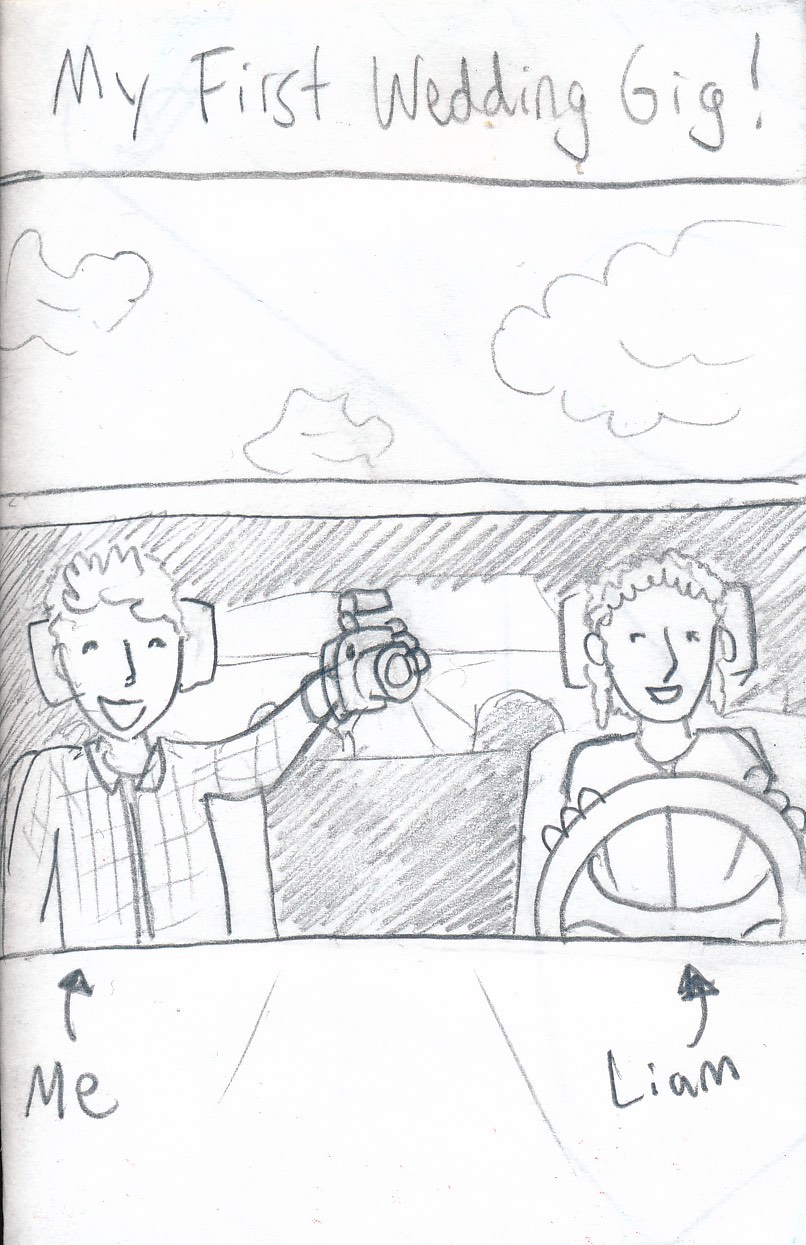The Literacy Narrative project is not a traditional writing project. The narrative essay was my first time to write about how I read and write, and making a comics version of it was the last thing I expected to encounter in a first-year writing class. Because of the interesting topic and unusual approaches to elaborate, this project helped me march towards the learning outcome of this class, most notably Rhetorical Composition, Critical Thinking, Writing as Process, and Visual Thinking. The individual conference with the professor and the peer review of the storyboard added a lot of valuable thoughts to my project.
“I see you structure it as an argumentative essay. There might be more work for you to turn this into a comic.”
For the first assignment of the semester, I was reluctant to take the risk of being creative, despite the brainstorming practice in advance. Having written down key reading and writing experiences, I debated about the way I should lay out my analysis. As an ESL student, I had only been trained systematically to write argumentative essays in English. Eventually, I chose the safest option. After reading others’ works and the individual conference, I realized that there are more acceptable ways and lots of flexibility in class to tell a story. I must consider the audience, purpose, constraints of each genre/style, and thus the trade-offs I have to make.
Nevertheless, my argumentative essay prompted me to think critically about my reading and writing habits and employing evidence to support my statements. From very detailed stories I brainstormed in class, I was able to identify the patterns and build up a strong logic chain. My language learning experience using visualization formed the basis of my reading habit using imagination when I was young, and I wrote by reversing my reading process. As I grow up and read more and more due to my introversion, I have the immersive reading and writing experience in which I can be in the protagonists’ shoes and communicate with them. Therefore, even without vivid and detailed stories in plain text, I encountered few obstacles when making the plot for my comic. My inventory of detailed stories from the brainstorming practice greatly contributed to the ease of the process.
“I think this essay could be more coherent. It could flow more smoothly.”
 After a discussion with one writing tutor, I decided to employ the content focused structure for my essay as it directly corresponded to “the way I read” and “the way I write” in the prompt. However, as the professor said, the transition was not smooth if my writing was considered a story instead of merely an analysis. The problem of this structure became unresolvable when I was making my comic – there was no way to visualize a transition as abstract as a change in topics. As a result, I adopted the chronological structure with which the change in time and be easily implied by my stories. My peers who reviewed my storyboard agreed as well. When I went back to the text narrative and edited it accordingly, it also turned out to flow better. This reminded me of my other previous writings that might be too focused on the content to switch from one topic to another smoothly. In many cases, abrupt transitions may indicate problems in the logic chain or cause problems for the audience to understand. From this experience, visualization can be used to detect this kind of problems and offer potential solutions.
After a discussion with one writing tutor, I decided to employ the content focused structure for my essay as it directly corresponded to “the way I read” and “the way I write” in the prompt. However, as the professor said, the transition was not smooth if my writing was considered a story instead of merely an analysis. The problem of this structure became unresolvable when I was making my comic – there was no way to visualize a transition as abstract as a change in topics. As a result, I adopted the chronological structure with which the change in time and be easily implied by my stories. My peers who reviewed my storyboard agreed as well. When I went back to the text narrative and edited it accordingly, it also turned out to flow better. This reminded me of my other previous writings that might be too focused on the content to switch from one topic to another smoothly. In many cases, abrupt transitions may indicate problems in the logic chain or cause problems for the audience to understand. From this experience, visualization can be used to detect this kind of problems and offer potential solutions.
“Drawing is a thinking process.” This entire project consisting of alphabetic writing, comics, and reflections is very reflective and educative for me to understand my strengths and weakness in my reading and writing habits. Visual thinking, identified in my narrative essay as one of my key strengths, is more widely applicable and important than I thought. Many takeaways from this project will definitely help me succeed in many other different projects later in my life.
Assignment Link: https://eng181f19.davidmorgen.org/assignments/projects/literacy-narrative-part-3/









 After a discussion with one writing tutor, I decided to employ the content focused structure for my essay as it directly
After a discussion with one writing tutor, I decided to employ the content focused structure for my essay as it directly 
